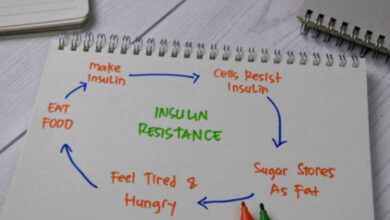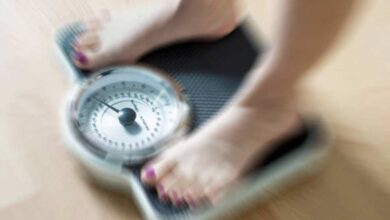
There are times when body weight is a concern. We all want to know the ideal weight for our age and height. However, it is imperative to understand that there isn’t only one healthy weight for each individual. Multiple factors come into play while deciding our ideal weight—for example, muscle-fat ratio, sex, body shape, height, and more.
Excess weight can lead to severe health conditions such as type-2 diabetes, high blood pressure, cardiovascular problems, and more. Keeping these conditions at bay would help maintain life insurance costs to a minimum. Hence, you must monitor it! Let’s explore a few methods to determine the ideal weight for your age and height.
Read also: How Best Posture Corrector Contribute to an Upright Posture
Body Mass Index (BMI)
Body mass index is a popularly used method to decide whether you have a healthy body weight. It determines your body fat level based on your weight and height. You can make use of an online BMI calculator for women and men to evaluate your body mass index.
As per the National Institutes of Health (NIH),
- A BMI less than 18.5 means the individual is underweight
- A BMI ranging from 18.5 to 24.9 is ideal
- A BMI between 25 and 29.9 means the individual is overweight
- A BMI over 30 implies obesity
BMI can help you determine whether your weight is healthy. However, BMI is not the absolute tool to gauge your body fat level. Here’s why:
High-performance athletes and bodybuilders have little body fat. However, their weight could be like any of us or even more than us due to their muscle mass. But, does it mean they are overweight? No!
Waist-to-Hip Ratio (WHR)
The waist-to-hip ratio (WHR) is another way to determine whether one is overweight. The waist-to-hip ratio compares your waist size with your hips. People with excessive body fat in the middle are at a higher risk of developing cardiovascular diseases and diabetes. Higher the waist measurement as compared to the hips, the greater the risk. Here’s how you can measure your waist-to-hip ratio:
Step 1: Measure around the waist; it is the narrowest area above the belly button.
Step 2: Divide this measurement with the measurement of your hips.
Let’s say your waist is 27 inches and your hips are 34 inches; you need to divide 27 by 34. Health experts suggest that WHR can impact cardiovascular diseases. Here’s how:
In males,
- For ratios below 0.9, the risk of cardiovascular disease is low
- For ratios between 0.9 to 0.99, the risk is moderate
- For ratios 1.0 and above, the risk is high
In females,
- Below 0.8, the risk of developing cardiovascular disease is low
- Between 0.8 to 0.89, it is moderate
- From 0.9 and above, the risk is high
However, you must note that the waist-to-hip ratio does not accurately gauge your total body fat level.
Read also: The Importance of Nutrition and Exercise for a Healthier Lifestyle
Waist-to-Height Ratio (WHR)
The waist-to-height ratio is another method that can measure the risk of contracting heart diseases, diabetes, and other lifestyle disorders. Anyone whose waist measurement is more than half of their height is at a higher risk of getting diagnosed with severe health issues.
Here’s how you can measure your waist-to-height ratio:
Divide your waist size by your height. If the calculation is below 0.5, you probably have a healthy weight.
- A woman who is 163 cms tall should have a waist measurement below 81 cms
- A man who is 183 cm tall must have a waist measurement below 91 cm
The above figures will give a waist-to-height ratio measurement that is less than 0.5.
The waist-to-height ratio can be a useful tool since it compares your waist size with your overall height. However, this does not consider height-to-hip measurement.
Body mass index (BMI), waist-to-hip ratio (WHR), and waist-to-height ratio (WHtR) are three tools that can help you assess whether you have a healthy weight and take measures to improve your health. In addition to those measures, surrounding yourself with positive vibes can be very motivating in your journey towards your health goals. While you undertake this journey, health experts suggest that you should make use of all the aforesaid methods to gain a clear understanding of your body fat level.







